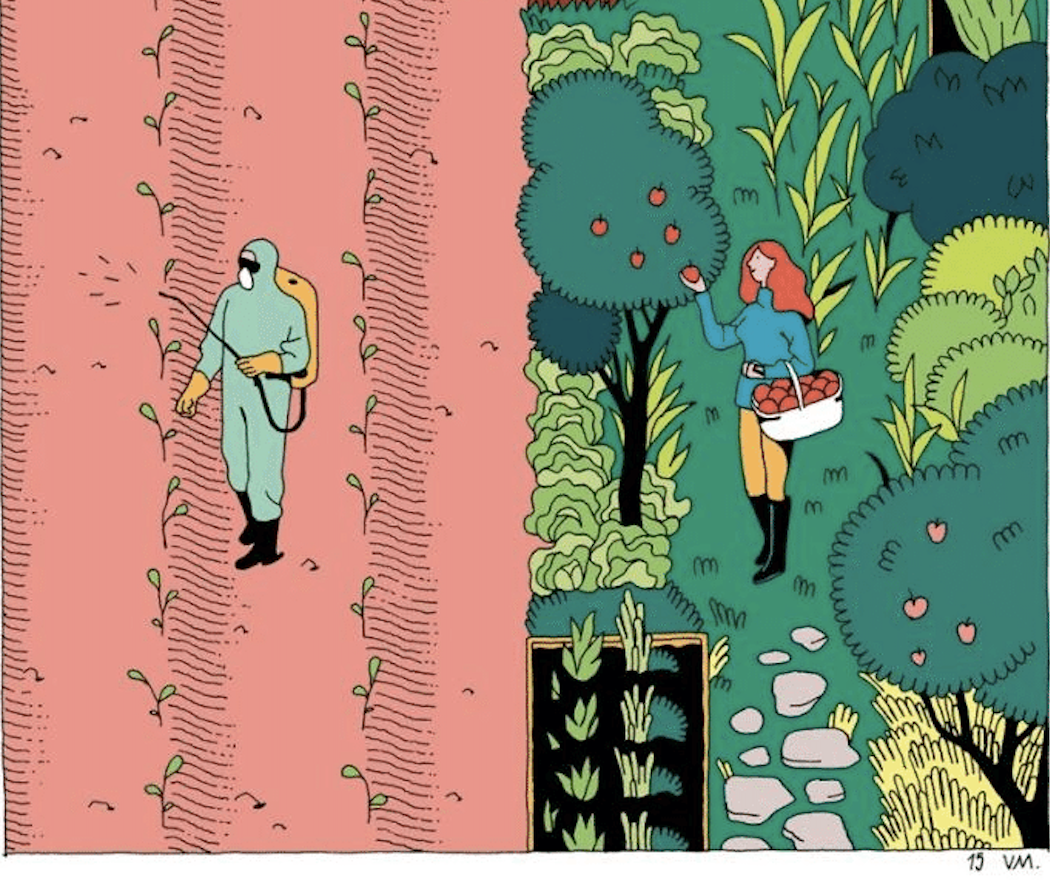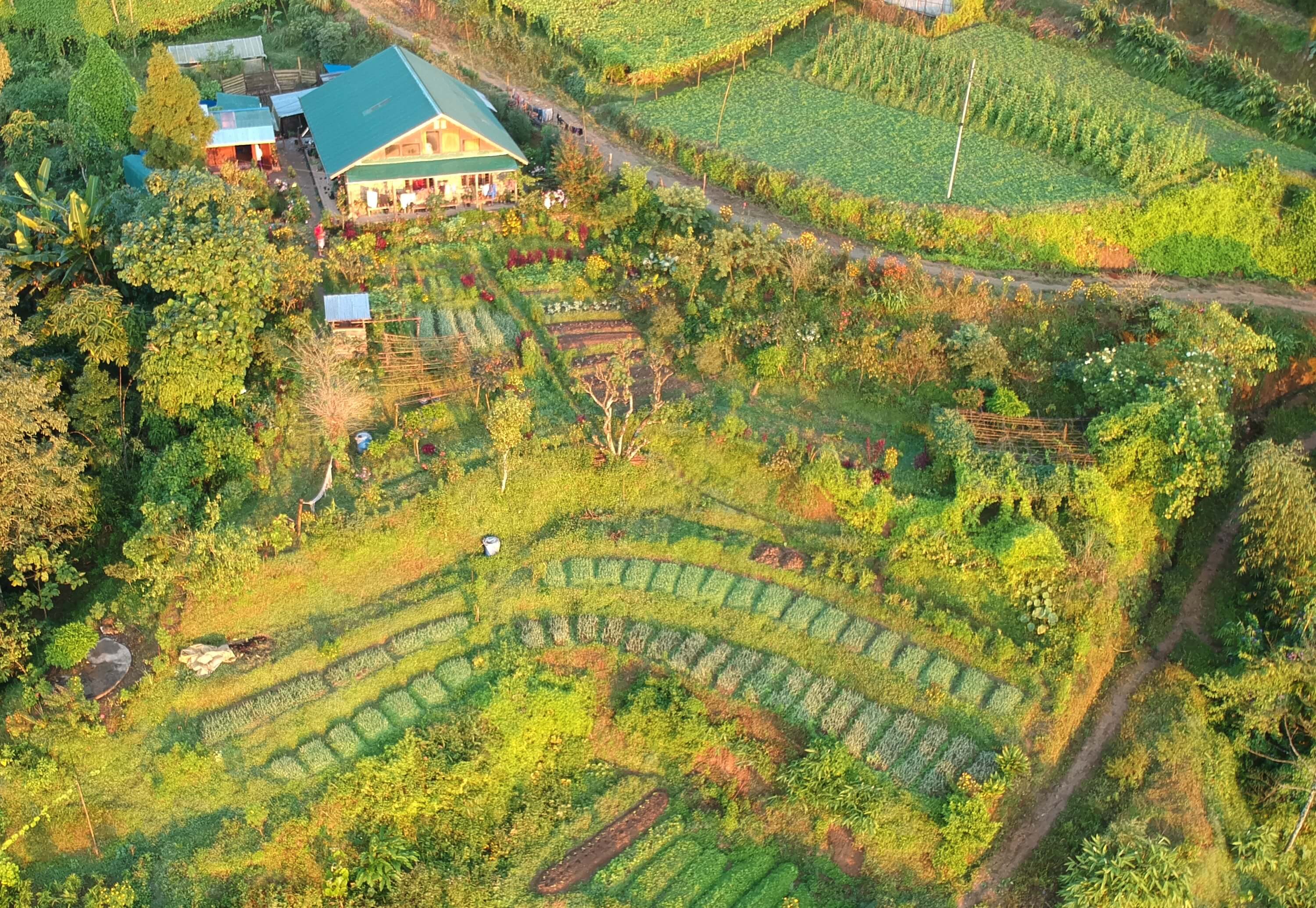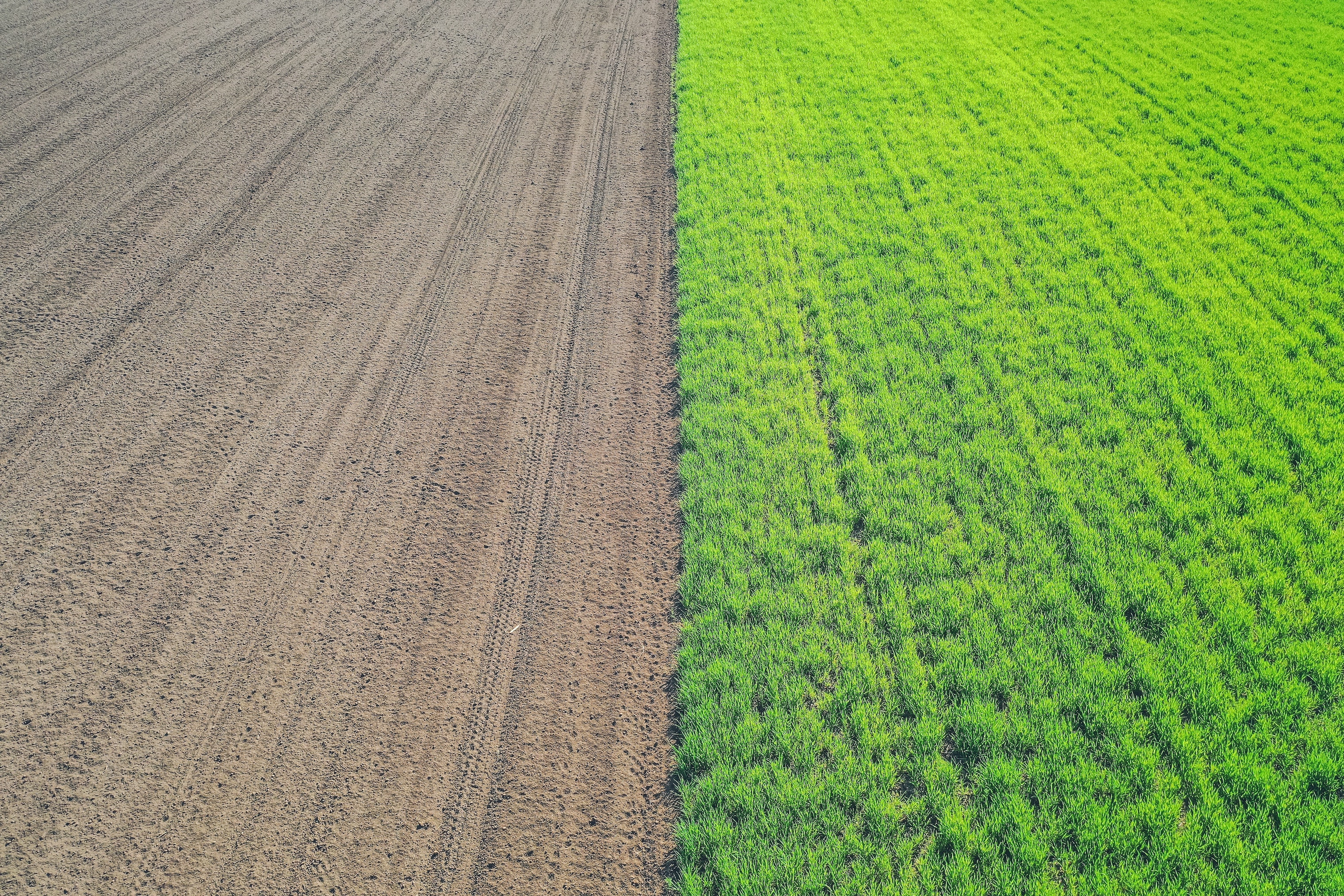Agriculture has been around for 12,000 years, ever since Adam and Eve first realized that they can grow apples, and not just pick them.
Agriculture has been a perfectly viable form of food production until the invention of chemical fertilizers, pesticides, genetically-modified crops, and single-crop cultures. This led to pollution of soil, air, aquifers, rivers, oceans, permanent erosion of land, and destruction of the habitat and local biodiversity, including the disappearance of bees and other local animals.
But what can we do? By 2030, two more billion mouths are expected to be fed. And about 30% of our land has already been lost to erosion and bad agricultural practices.
In 1978, two professors from Tasmania, David Holmgren and Bill Mollison, proposed something called ‘permanent culture’. Later the term evolved into what is now known as ‘permaculture’.
Almost Heaven Farms, a full-fledged, self-sustaining farm based on the design principles of permaculture.
What is permaculture?
Permaculture is not just an alternative to agriculture as it’s more than that. Permaculture is a set of design principles centered on a holistic system of thinking. It simulates and utilizes the same patterns or resilience found in the natural world and encompasses elements like regenerative agriculture, rewilding, and community resilience, since social aspects were integral to a truly sustainable system as inspired by Masanobu Fukuoka’s natural farming philosophy.
Masanobu Fukuoka’s natural farming includes ecological design and engineering, water resources management and self-maintained habitat, all systems modelled from the natural ecosystem.
Essentially, it is a philosophy of working with nature, not against it and is based on 12 principles. They include:
1 – Observe and Interact
2 – Catch and Store Energy
3 – Obtain a Yield
4 – Apply Self-Regulation and Accept Feedback,
5 – Use and Value Renewable Resources and Services,
6 – Produce No Waste
7 – Design From Patterns to Details
8 – Integrate Rather Than Segregate
9 – Use Small and Slow Solutions
10 – Use and Value Diversity
11 – Use Edges and Value the Marginal
12 – Creatively Use and Respond to Change
Masanobu Fukuoka was a farmer and philosopher who championed natural farming characterized by “no tilling, no use of compost, and no weeding.”
Does it work?
Probably the most important element of permaculture is the diversity that exists on a plot of land, as opposed to our current massive single-crop producing agricultural system. Additionally, a permacultural land is self-sustaining and doesn’t require any type of chemicals to thrive.
But what about efficiency? It obviously makes more sense from a business point of view to consider agriculture because of the benefit of mass producing crops. It is efficient and scales well, making permaculture sound like an unviable business option. Morever, if permaculture were to be adopted, these additional concerns must also be answered:
– How will we cope if we don’t try to produce more food per hectare of land?
– Won’t the adoption of permaculture raise the price of food?
Permaculture lovers around the world have already started to experiment with different elements, and found out that there are ways in which you can create a profitable permaculture environment.
Masanobu Fukuoka Natural Farm in Ehime Prefecture in Japan.
Permaculture: The Bigger Picture
But why is permaculture better than regular agriculture? Or even better than organic farming?
Two words: soil erosion.
As mentioned above, 30% of our arable land has been lost to erosion and intensive chemically dense agricultural practices. According to the American Food and Agriculture Organization (FAO), there are only about 60 years of land farming left until the soils are completely unproductive.
So taking care of our soil is important.
However, there is one more hidden benefit of soil. It absorbs carbon dioxide. Based on a study, a healthy soil is said to have the potential to offset 5-15% of the global fossil fuels emissions. Damaged land, on the other hand, emanates CO2 as tilling of land leads to the leak of CO2 and other gases into the atmosphere.
I don’t know about you, but suddenly I feel like I want to appreciate soil more. As businesses, we have immense resources to better manage our land. Innovations in food production are growing exponentially. As a business, managing soil is as important as – if not more important than – managing employees, factories and transportation of goods. The long-term benefit heavily outweighs the short-term costs.
And permaculture is one way of investing in our future.
Not just as a business. But as global citizens as well.
Photos by Bence Balla-Schottner on Unsplash and Hossein Sadri.













